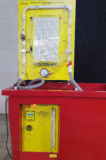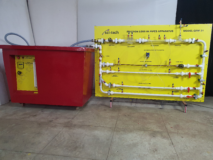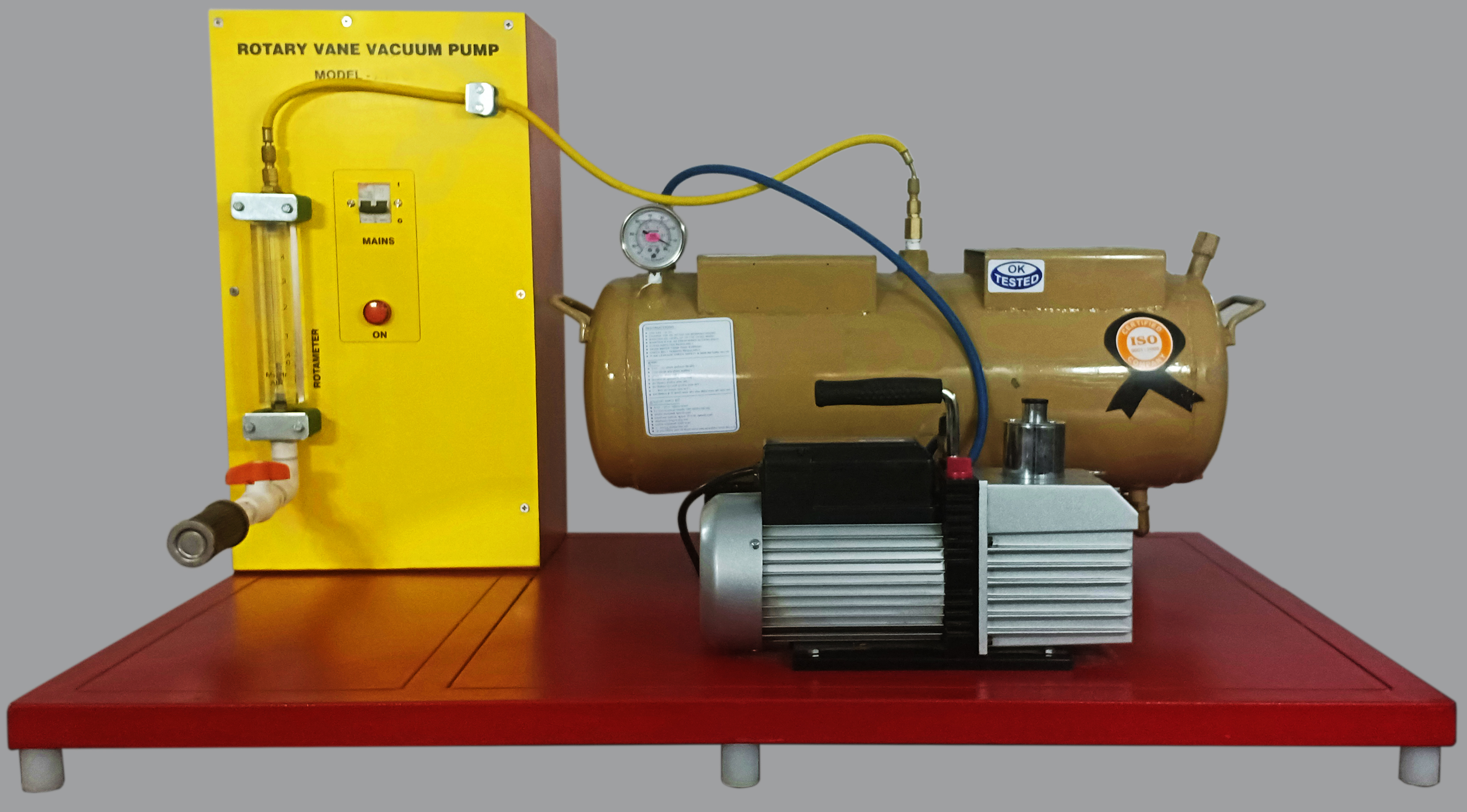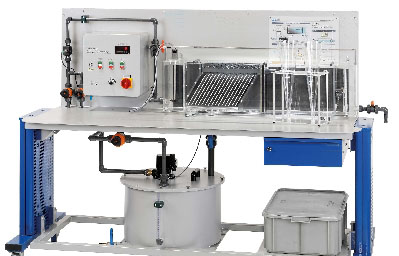Separation in Sedimentation Tank Apparatus Model FM 128
Home » Products » Separation in Sedimentation Tank Apparatus Model FM 128
Separation in Sedimentation Tank Apparatus Model FM 128
Sci-tech Separation in Sedimentation Tank Apparatus Model FM 128 makes it possible to investigate the separation of solids from a suspension in a sedimentation tank.
Item Description
In sedimentation tanks, solids are separated out from suspensions under the influence of gravity. In this process the density of the solid particles must be greater than that of the liquid.
First a concentrated suspension is prepared in a tank, comprising water and the solid to be separated. A pump transports the concentrated suspension to the sedimentation tank. Upstream of the sedimentation tank the suspension is mixed with fresh water. The raw water generated in this way flows into the sedimentation tank via an inlet weir. A stirring machine is located upstream of the inlet weir. This prevents solids sediments before entering the sedimentation tank. The treated water first flows under a baffle and then over a weir to the outlet. The height of the weir on the outlet side is adjustable and allows the water level in the sedimentation tank to be changed. The water level above the inlet weir can also be adjusted. This affects the flow velocity over the inlet weir.
A lamella unit can be inserted into the experimental section. This makes it possible to study how lamellas affect the separation process. The flow through the lamellas occurs from bottom to top. Above the lamellas is an outlet channel. The side walls of the outlet channel are designed as a serrated weir. The flow rates of the concentrated suspension and the fresh water are adjusted via valves. This means the mixing ratio, and thus the concentration of solids in the inlet to the sedimentation tank, can be adjusted. An electromagnetic flow rate sensor measures the flow rate in the inlet of the sedimentation tank. Flow rate and speed of the stirring machine are displayed digitally. The sedimentation tank is equipped with lighting to better observe the flow conditions.
Features
Transparent sedimentation tank for observation of the separation process
Illumination for optimum visualization of the flow conditions
Possible to use lamellas in the sedimentation tank
See also different:

Study of pressure losses in bends and fittings in any pipe system is useful in view of the loss of head and consequent pumping power requirements. Sci-tech Pressure Loss in Bends and Fittings Apparatus Model FM05 is important equipment for any [...]

Sci-tech Friction Loss in Pipes Apparatus Model GFM 31 has been designed to enable student measure loss of head in pipes due to friction at various flow velocities or Reynolds numbers. The geometry and flow parameters have been selected to ena [...]

Sci-tech Rotary Vane Pump Test Apparatus Model FM 094 conveys air from a pressure vessel. Negative pressure builds up in the pressure vessel. A large manometer on the pressure vessel indicates the negative pressure. The pressure vessel has two [...]

